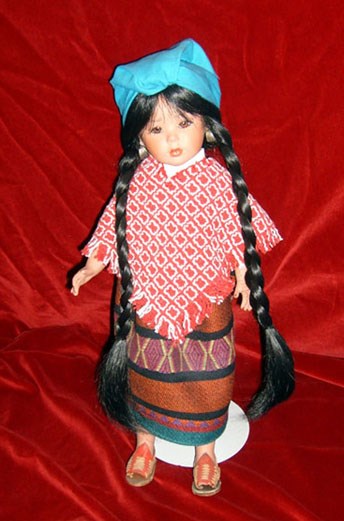
Capital: Queretaro The white blouse, the rustic poncho woven with bits of red, the long woolen skirt ringed with earthen colors, and the sky blue rebozo head wrap: all reflect the unique geography of Queretaro, founded by the Spanish in 1531 on the site of an Otomi village. With the towering Sierra Gorda looming over Queretaro's northeastern borders, clouds moving in from the Gulf of America cannot continue on their way, so the northern desert of this small central state receives little rainfall. Summer rains do manage to reach the southern region, along with hail and frequent frosts in winter. Queretaro's rugged geography includes portions of Mexico's Central Highland Plateau and large mountain ranges including the Sierra Madre Oriental, the Transversal Volcanic System and the Sierra Gorda. Fantastic cacti with unusual shapes, beautiful symmetry, and colorful flowers grow in a limited area between Queretaro and Hidalgo. The demand for and unregulated exploitation of these plants, both in and outside Mexico's borders, has placed several species in danger of extinction. For example, the bisnaga gigante (a barrel cactus) also called espina de oro (golden thorn), now rarely appears in its natural habitat. In the southern valleys, natural vegetation has given way to agriculture, mostly corn, along with alfalfa, onions, lettuce, sorghum, fodder, beans, barley, and cabbage. Queretaro's dairies also make it one of the states with the highest milk production in all Mexico. Queretaro's main industrial activities, centered in the capital and San Juan del Rio, include textile manufacturing and assembly, food processing, metal fabrication, and chemicals. Did you know...? 
Capital: Querétaro El vestido se compone de: una blusa blanca, un poncho rústico tejido con hilo rojo, la falda larga de lana rodeada de un anillo con colores terracotas y el rebozo azul cielo que cubre la cabeza: estos elementos reflejan la geografía única de Querétaro, fundado por España en 1531 sobre un pueblo Otomí. Con la altísima Sierra Gorda que surge en la frontera noreste de Querétaro, las nubes que van hacia el Golfo de México no pueden continuar con su camino, por eso el desierto del norte de este pequeño estado central recibe poca precipitación. Las lluvias de verano logran alcanzar la región del sur, con granizo y frecuentes heladas en el invierno. La geografía de Querétaro incluye parte de la Meseta Central montañosa de México y grandes sierras como la Sierra Madre Oriental, el Sistema Transversal Volcánico y la Sierra Gorda. Cactus fantásticos de formas insólitas, coloridas flores de hermosas simetrías crecen en un área limitado entre Querétaro e Hidalgo. La demanda y la explotación irregulada de estas plantas, tanto en el interior como en el exterior de México, han puesto a varias especies en peligro de extinción. Por ejemplo, el biznaga gigante, también llamada espina de oro, raras veces la podemos ver en su hábitat natural. En los valles del sur, la vegetación natural ha cedido el paso a la agricultura, sobre todo al maíz, alfalfa, cebolla, lechuga, sorgo, forraje, fríjol, cebada, y col. Las plantas procesadoras de lácteos de Querétaro lo han colocado como uno de los estados con la más alta producción de leche en México. Los principales centros industriales de Querétaro, se encuentran en la capital y en San Juan del Río, incluyen la fabricación de textiles y el ensamblaje, la industria alimenticia, la fabricación de metales, y sustancias químicas. Sabías que...? |
Last updated: February 18, 2025
